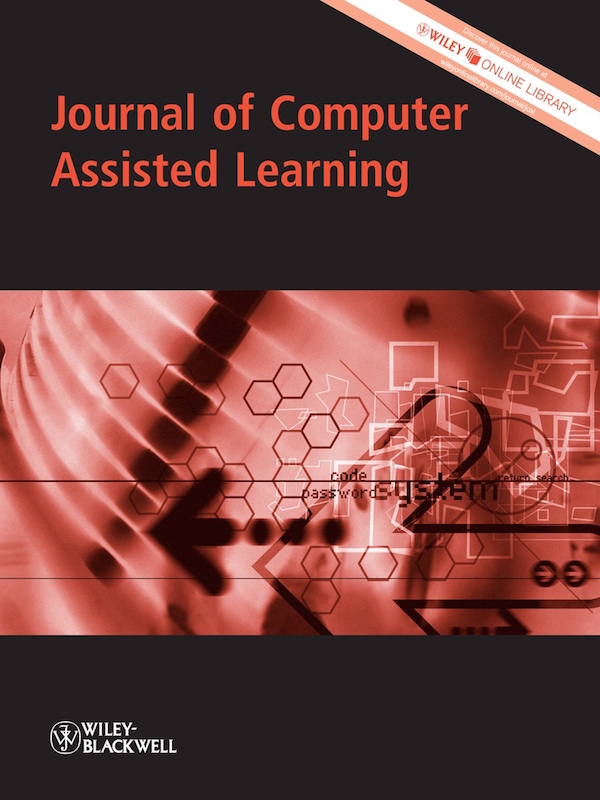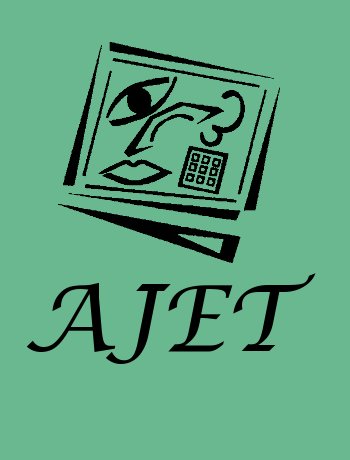An issue of Journal of Computer Assisted Learning has just been added to EdITLib.
The table of contents is available here: http://www.editlib.org/j/JCAL/v/31/n/6//
Contents
Comparing the effectiveness of peer instruction to individual learning during a chromatography course
J. Morice, N. Michinov, M. Delaval, A. Sideridou & V. Ferrières
Peer instruction has been recognized as an instructional method having a positive impact on learning compared to traditional lectures in science. This method has been widely supported by the socio-constructivist … More
Inventing motivates and prepares student teachers for computer-based learning
I. Glogger‐Frey, J. Kappich, R. Schwonke, L. Holzäpfel, M. Nückles & A. Renkl
A brief, problem-oriented phase such as an inventing activity is one potential instructional method for preparing learners not only cognitively but also motivationally for learning. Student teachers often need to … More
Can technologies make a difference for hospitalized youth: Findings from research
D. Maor & K.J. Mitchem
Children and youth who are hospitalized for a short or long term become socially isolated from their family, school and classmates. As their isolation increases, so does their vulnerability as … More
The impact of computer-based instruction on the development of EFL learners' writing skills
A. Zaini & G. Mazdayasna
The current study investigated the application and effectiveness of computer assisted language learning (CALL) in teaching academic writing to Iranian EFL (English as a Foreign Language) learners by means of … More
Supporting conceptual understanding of the associative and distributive properties through digital gameplay
A.R. Denham
There has been a steady rise in the support for games as learning environments. This support is largely based on the strong levels of engagement and motivation observed during gameplay. … More
Lecture capture with real-time rearrangement of visual elements: impact on student performance
P.‐T. Yu, B.‐Y. Wang & M.‐H. Su
The primary goal of this study is to create and test a lecture-capture system that can rearrange visual elements while recording is still taking place, in such a way that … More
Music behind scores: case study of learning improvisation with Playback Orchestra method
P. Juntunen, I. Ruokonen & H. Ruismäki
For music students in the early stages of learning, the music may seem to be hidden behind the scores. To support home practising, Juntunen has created the layback rchestra method … More
Stop talking and type: comparing virtual and face-to-face mentoring in an epistemic game
E.A. Bagley & D.W. Shaffer
Research has shown that computer games and other virtual environments can support significant learning gains because they allow young people to explore complex concepts in simulated form. However, in complex … More
Computerized writing and reading instruction for students in grades 4–9 with specific learning disabilities affecting written language
S. Tanimoto, R. Thompson, V.W. Berninger, W. Nagy & R.D. Abbott
Computer scientists and educational researchers evaluated effectiveness of computerized instruction tailored to evidence-based impairments in specific learning disabilities (SLDs) in students in grades 4–9 with persisting SLDs despite prior extra … More
The effects of GBL and learning styles on Chinese idiom by using TUI device
D.T. Ku, Y.‐H. Huang & S.‐C. Hus
This study investigated how the integration of a game-based learning strategy and a tangible user interface (TUI) device improves the learning achievement of fifth-grade students in studying Chinese idioms. By … More
Social presence in online discussions as a process predictor of academic performance
S. Joksimović, D. Gašević, V. Kovanović, B. E. Riecke & M. Hatala
With the steady development of online education and online learning environments, possibilities to support social interactions between students have advanced significantly. This study examined the relationship between indicators of social … More
Effectiveness of feedback for enhancing English pronunciation in an ASR-based CALL system
Y.‐H. Wang & S.S.‐C. Young
This paper presents a study on implementing the ASR-based CALL (computer-assisted language learning based upon automatic speech recognition) system embedded with both formative and summative feedback approaches and using implicit … More
Investigating an application of speech-to-text recognition: a study on visual attention and learning behaviour
Y‐M. Huang, C‐J. Liu, R. Shadiev, M‐H. Shen & W‐Y. Hwang
One major drawback of previous research on speech-to-text recognition (STR) is that most findings showing the effectiveness of STR for learning were based upon subjective evidence. Very few studies have … More
Enhancing formal e-learning with edutainment on social networks
A. Labus, M. Despotović‐Zrakić, B. Radenković, Z. Bogdanović & M. Radenković
This paper reports on the investigation of the possibilities of enhancing the formal e-learning process by harnessing the potential of informal game-based learning on social networks. The goal of the … More
Assessment based on Serious Gaming Interactive Questions (SGIQ)
G. Šimić, A. Jevremović, Z. Kostić & D. Ðorđević
The case study presented in this paper describes the pedagogical aspects and collected experience in using e-learning tool named IPA-PBL. Improving assessments in the preparation for AMET's (Air Medical Evacuation … More
Persistence of learning gains from computer assisted learning: Experimental evidence from China
D. Mo, L. Zhang, J. Wang, W. Huang, Y. Shi, M. Boswell & S. Rozelle
Computer assisted learning (CAL) programs have been shown to be effective in improving educational outcomes. However, the existing studies on CAL have almost all been conducted over a short period … More


